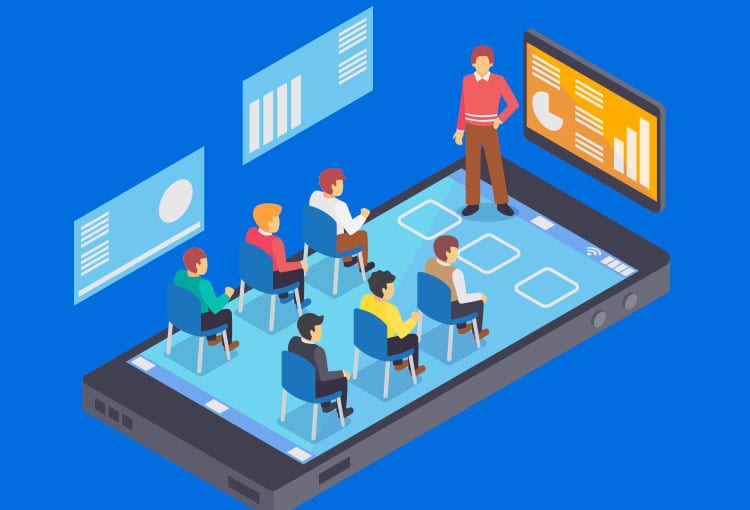
The landscape of education is undergoing a profound transformation, driven by the rapid advancement of digital technology. At the heart of this transformation is e-learning, or electronic learning, which harnesses the power of technology to deliver E-learning educational content and facilitate learning. This article explores what e-learning is, its key benefits, challenges, and its impact on the future of education.
What is E-Learning?
E-learning refers to the use of electronic media and digital tools to facilitate learning and education. It encompasses a range of formats, including online courses, virtual classrooms, webinars, and interactive multimedia content. Unlike traditional educational methods that often require physical presence and printed materials, e-learning allows learners to access educational resources and participate in learning activities from any location with an internet connection.
Benefits of E-Learning
- Global Accessibility: E-learning breaks down geographical barriers, making education accessible to learners worldwide. Students in remote or underserved regions can now access high-quality educational content without the need to relocate or commute. This global reach is particularly beneficial for those who previously had limited access to educational opportunities.
- Flexibility and Convenience: One of the most significant advantages of e-learning is its flexibility. Learners can engage with course materials at their own pace and on their own schedule. This flexibility is especially valuable for working professionals, parents, and individuals with other commitments, as it allows them to balance their educational pursuits with personal and professional responsibilities.
- Cost-Effectiveness: E-learning often reduces the costs associated with traditional education. By eliminating the need for physical infrastructure, such as classrooms and printed textbooks, both institutions and students can save money. Many e-learning platforms offer affordable or even free courses, making education more cost-effective and accessible.
- Personalized Learning: Advanced e-learning platforms utilize adaptive learning technologies to create personalized learning experiences. These systems analyze learner performance and preferences to tailor content and assessments to individual needs. Personalized learning helps address specific learning gaps, enhance comprehension, and improve overall educational outcomes.
- Interactive and Engaging Content: E-learning platforms can integrate multimedia elements such as videos, simulations, and interactive quizzes. These tools make learning more engaging and can help clarify complex concepts. Interactive content caters to different learning styles and keeps learners motivated by offering diverse ways to interact with the material.
Challenges of E-Learning
- Digital Divide: Despite its advantages, e-learning relies on access to technology and reliable internet connections. The digital divide—the gap between those who have access to digital resources and those who do not—remains a significant challenge. Students in low-income or rural areas may face difficulties accessing e-learning opportunities, which can exacerbate existing educational inequalities.
- Engagement and Motivation: Maintaining engagement and motivation in an online learning environment can be challenging. The absence of face-to-face interaction and physical presence may lead to decreased motivation for some learners. To address this, e-learning strategies must include interactive elements, regular feedback, and opportunities for virtual collaboration to foster engagement and sustain motivation.
- Quality Assurance: The proliferation of e-learning platforms has raised concerns about the quality and credibility of educational content. With numerous options available, learners must carefully evaluate the reputation and reliability of courses and institutions. Accreditation and quality assurance mechanisms are crucial to ensure that e-learning provides a valuable and credible education.
- Privacy and Security: E-learning platforms collect and store personal data, which raises concerns about privacy and data security. Institutions must implement robust security measures to protect user information from breaches and unauthorized access. Compliance with data protection regulations and transparent privacy policies are essential for maintaining trust and safeguarding user data.
The Future of E-Learning
The future of e-learning is poised for exciting advancements, driven by several emerging trends:
- Artificial Intelligence (AI): AI technologies are set to enhance e-learning by providing personalized recommendations, automating administrative tasks, and offering real-time support. AI can analyze learner data to tailor educational experiences and improve overall effectiveness.
- Virtual Reality (VR) and Augmented Reality (AR): VR and AR have the potential to create immersive learning environments. These technologies can offer hands-on simulations and virtual experiences that enhance understanding and engagement, making learning more interactive and experiential.
- Blended Learning: The integration of e-learning with traditional classroom instruction, known as blended learning, is expected to become more common. This hybrid approach combines the strengths of both online and in-person learning, providing a balanced and flexible educational experience.
Conclusion
E-learning represents a significant evolution in education, offering enhanced accessibility, flexibility, and personalization. While challenges such as the digital divide and maintaining engagement need to be addressed, the benefits of e-learning are substantial. As technology continues to advance, e-learning will play an increasingly central role in shaping the future of education. By embracing e-learning, we can create a more inclusive, dynamic, and effective educational environment, preparing learners for success in a rapidly changing world.